Best PyTorch Learning Resources to Buy in December 2025

Machine Learning with PyTorch and Scikit-Learn: Develop machine learning and deep learning models with Python


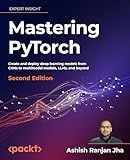
Mastering PyTorch: Create and deploy deep learning models from CNNs to multimodal models, LLMs, and beyond


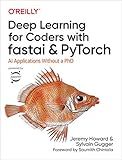
Deep Learning for Coders with Fastai and PyTorch: AI Applications Without a PhD


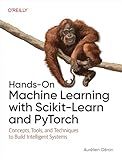
Hands-On Machine Learning with Scikit-Learn and PyTorch: Concepts, Tools, and Techniques to Build Intelligent Systems


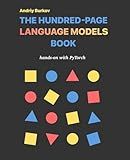
The Hundred-Page Language Models Book: hands-on with PyTorch (The Hundred-Page Books)


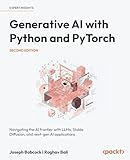
Generative AI with Python and PyTorch: Navigating the AI frontier with LLMs, Stable Diffusion, and next-gen AI applications


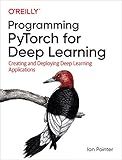
Programming PyTorch for Deep Learning: Creating and Deploying Deep Learning Applications


To implement custom loss functions in PyTorch, you need to follow these steps:
- Import the required libraries: Start by importing the necessary libraries, such as PyTorch.
import torch import torch.nn as nn
- Create a custom loss function class: Define a custom loss function class by inheriting the base torch.nn.Module class. You need to override the forward method, which will compute the loss based on your requirements.
class CustomLoss(nn.Module): def __init__(self): super(CustomLoss, self).__init__()
def forward(self, predictions, targets):
# Compute loss here
loss = torch.mean(torch.abs(predictions - targets))
return loss
In this example, the custom loss function computes the mean absolute difference between the predictions and the targets.
- Instantiate the custom loss function: Create an instance of the custom loss function class.
loss_function = CustomLoss()
- Use the custom loss function: Use the custom loss function in your training loop. Take the following steps: a. Compute the predictions of your model. predictions = model(input) b. Compute your loss using the custom loss function. loss = loss_function(predictions, targets) c. Perform backpropagation and update the model parameters based on the loss using optimizer. optimizer.zero_grad() loss.backward() optimizer.step()
By implementing these steps, you can utilize a custom loss function in PyTorch for your specific requirements.
How to define a loss function using PyTorch's nn.Module?
To define a loss function using PyTorch's nn.Module, you can create a custom class that inherits from nn.Module and implements the forward method. The forward method takes the model's predictions and the ground truth labels as input and computes the loss value.
Here's an example of defining a custom loss function class using PyTorch's nn.Module:
import torch import torch.nn as nn
class CustomLoss(nn.Module): def __init__(self): super(CustomLoss, self).__init__()
def forward(self, predictions, targets):
# Compute the loss value
loss = torch.mean(torch.abs(predictions - targets))
return loss
In this example, the forward method takes the model's predictions and ground truth targets as inputs and computes the absolute difference between them. The torch.mean function is then used to compute the mean of this absolute difference as the loss value.
You can use this custom loss function in your training loop by instantiating an instance of the class and calling it with your model's predictions and ground truth targets. For example:
loss_function = CustomLoss() predictions = model(inputs) loss = loss_function(predictions, targets)
Note that in this example, the loss function computes the mean absolute error (MAE) between the predictions and targets. You can customize the loss function implementation based on your requirements and the specific loss function you want to use.
What is the importance of custom loss functions in deep learning?
Custom loss functions are essential in deep learning because they offer flexibility in modeling complex problems and enable the optimization process to focus on specific objectives. Here are some key reasons why custom loss functions are important:
- Tailored Objectives: Deep learning models are used for a wide range of tasks, such as image classification, object detection, machine translation, etc. Custom loss functions allow the model to optimize parameters based on task-specific objectives, ensuring that the model is better suited for the task at hand.
- Handling Imbalanced Data: In real-world scenarios, imbalanced datasets are quite common, where one class dominates the others. Custom loss functions can be designed to address this issue by assigning different weights or penalties to different classes, reducing the impact of the dominant class and improving overall model performance.
- Error Sensitivity: Different applications require different levels of sensitivity to errors. For example, in medical diagnosis, false negatives (missing a positive case) can have severe consequences. Custom loss functions enable the model to assign higher penalties for specific types of errors, making it more sensitive to such errors.
- Incorporating Domain Knowledge: Custom loss functions enable the integration of domain knowledge into the learning process. By encoding prior knowledge or constraints into the loss function, the model can be guided towards behavior that aligns with the desired properties of the problem domain.
- Multi-Task Learning: Deep learning models often handle multiple related tasks simultaneously. Custom loss functions enable joint optimization of multiple objectives, allowing the model to learn to solve multiple tasks together, even when there are trade-offs between the objectives.
- Addressing Noise and Outliers: Some datasets contain noise or outliers that can adversely affect the model's learning process. Custom loss functions can be designed to be robust against noise or to downweight the impact of outliers, making the model more resilient to such data instances.
By providing a means to tailor the optimization process, custom loss functions empower deep learning models to better adapt to specific tasks, improve performance, and address unique challenges in different domains.
What are some popular custom loss functions for regression tasks in PyTorch?
Here are some popular custom loss functions for regression tasks in PyTorch:
- Mean Squared Error (MSE): Calculates the average squared difference between the predicted and target values. It penalizes larger differences more than smaller differences.
def custom_loss_mse(y_pred, y_true): return torch.mean((y_pred - y_true)**2)
- Mean Absolute Error (MAE): Calculates the average absolute difference between the predicted and target values. It provides a more robust loss metric compared to MSE as it is less sensitive to outliers.
def custom_loss_mae(y_pred, y_true): return torch.mean(torch.abs(y_pred - y_true))
- Huber Loss: Combines the best properties of MSE and MAE by using MSE for smaller errors and MAE for larger errors. It provides a smooth, robust loss metric.
def custom_loss_huber(y_pred, y_true, delta=1.0): residual = torch.abs(y_pred - y_true) condition = residual < delta loss_small = 0.5 * torch.pow(residual, 2) loss_large = delta * residual - 0.5 * delta**2 return torch.where(condition, loss_small, loss_large).mean()
- SmoothL1Loss: Similar to Huber Loss, it also combines the properties of MSE and MAE. It is less sensitive to outliers compared to MSE and provides a smooth gradient for optimization.
import torch.nn.functional as F
def custom_loss_smoothl1(y_pred, y_true): return F.smooth_l1_loss(y_pred, y_true)
Note that these are just a few examples of custom loss functions for regression tasks. Depending on the specific problem and requirements, you can design and experiment with various custom loss functions to optimize your model.
How to create a custom loss function in PyTorch?
To create a custom loss function in PyTorch, you need to define a function that takes the predicted output and target as inputs, and returns the loss value.
Here's an example of how you can create a custom loss function in PyTorch:
import torch import torch.nn as nn
class CustomLoss(nn.Module): def __init__(self, weight): super(CustomLoss, self).__init__() self.weight = weight
def forward(self, predicted, target):
loss = torch.mean((predicted - target) \*\* 2) # calculate mean squared error
loss = loss \* self.weight # apply weight if needed
return loss
In this example, we create a custom loss function called CustomLoss. It extends the nn.Module class, as all PyTorch modules do. The __init__ method is used to initialize any parameters of the loss function, such as a weight. The forward method is where the actual computation happens. It takes the predicted output and target as inputs, calculates the mean squared error loss, and applies any required modifications (e.g., multiplying by a weight). Finally, it returns the calculated loss.
You can then use this custom loss function like any other PyTorch loss function in your training loop. For example:
# Create an instance of the custom loss function loss_func = CustomLoss(weight=2.0)
Calculate the loss
loss = loss_func(predicted, target)
Backpropagation and optimization
loss.backward() optimizer.step()
Note that if you need to use the loss function with GPU support, make sure to move your tensors to the appropriate device using .to(device) before applying the loss function.
What are the limitations of using custom loss functions in PyTorch?
There are several limitations of using custom loss functions in PyTorch:
- Computational Efficiency: Custom loss functions can be computationally expensive compared to predefined loss functions implemented in PyTorch. This is because PyTorch provides highly optimized versions of standard loss functions, which are designed to be efficiently computed on GPU hardware.
- Automatic Differentiation: PyTorch's autograd engine may not support custom loss functions that involve non-differentiable operations or complex mathematical formulations. This can lead to difficulties in backpropagation and gradient computation.
- Stability and Convergence: Custom loss functions may not always have desirable stability properties, making the training process harder to converge. Predefined loss functions, on the other hand, are often designed with stability and convergence in mind.
- Code Complexity: Implementing and debugging custom loss functions can be challenging, especially when dealing with complex mathematical formulations or specific requirements. Built-in loss functions in PyTorch are well-tested and optimized, reducing the need for manual implementation and potential bugs.
- Reproducibility: Custom loss functions might not be easily shared or reproduced by other researchers or practitioners, as they often require detailed documentation and code explanation. In contrast, predefined loss functions in PyTorch have clear specifications and are widely available for use by the community.
It is important to weigh the benefits and drawbacks of using custom loss functions in PyTorch, considering factors such as computational efficiency, differentiation support, stability, code complexity, and reproducibility.
